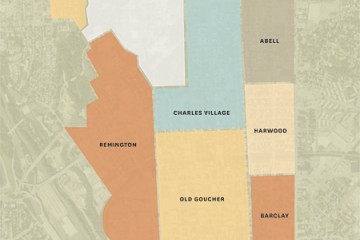President Franklin D. Roosevelt once said, "Great power involves great responsibility." Power itself can be measured in numerous ways, not just in physical might but in the capacity to affect the behavior of others or the course of events.
With this sentiment as a backdrop, dozens of representatives of universities, medical centers, and other large nonprofits from across the nation braved wintry conditions in the Baltimore area in December to take part in the 2013 Anchor Institutions Conference to discuss ongoing efforts to revitalize and enhance the areas in which they are based.
The daylong event took place in the Charles Commons Conference Center on the university's Homewood campus. Johns Hopkins was selected to host the annual conference because of its own signature "anchor" initiatives that partner with municipal and community entities to improve areas around its Baltimore campuses, and the city as a whole.
Of note, the university has been a key partner in the redevelopment of the 88-acre piano-shaped parcel north of the Johns Hopkins medical campus, an area of the city that once had a 70 percent vacancy rate, high infant mortality, high crime, and a poverty rate nearly twice the average of the rest of the city's. Johns Hopkins and the Annie E. Casey Foundation were asked to be core investors in what is now a 20-year $1.8 billion mixed-use revitalization project that already features the Science + Technology Park at Johns Hopkins, new housing, new retail and dining options, and the Henderson-Hopkins school and Harry and Jeanette Weinberg Early Childhood Center, with more scheduled for completion, including a hotel, supermarket, and urban park.
"In short, we've taken a holistic view of the landscape, considering everything from job creation to children's education to the availability of fresh food," said Johns Hopkins President Ronald J. Daniels, who gave the opening keynote address. "That has required extensive planning, formidable partnerships, and a great deal of investment of financial and political capital to inch this project forward. But if we can get the right pieces into place, we believe we can bring back the vitality that made this community so vibrant years ago."
In fall 2012, the university launched the Homewood Community Partners Initiative to explore areas of interest shared by the university and residents around the Homewood campus. If successful, the HCPI will transform the 10-neighborhood target area into a more vibrant college-town environment with new restaurants and retail stores, an enhanced real estate market, pedestrian-friendly walkways, safer streets, improved access to public transportation, better schools, and a variety of amenities.
Daniels said that while each project has gained traction, complacency is not an option and many challenges lie ahead.
"At this moment in time—somewhere past the halfway mark in the 20-year timeline of the [East Baltimore Development Initiative] and right at the start of our HCPI commitment—we stand in the middle of a tale of two projects. There is no claim of resounding success, and the work remains hard," Daniels said. "The goals for each community are similar—diverse, livable, vibrant, mixed-income neighborhoods with suitable schools, housing, retail, and opportunities for all residents. But unsurprisingly, there is no one path to lead us there."
The topic relates closely to one of the signature initiatives of Johns Hopkins' current $4.5 billion Rising to the Challenge fundraising campaign: the Institute for the American City, which aims to help revitalize urban centers through research and programs that foster economic growth, improve schools, reduce crime, address health issues, and cultivate the arts.
In the afternoon portion of the event, which was cut short because of the weather, attendees participated in a panel discussion titled "Health Anchors and Strategies to Improve Community Health" and had an extended Q&A session regarding logistics related to anchor institution actions.
The conference is put on by the Anchor Institutions Task Force, a national think tank for universities, medical centers, and other nonprofits that seek to use their knowledge, influence, and financial clout to promote jobs, better education, and community development in their areas.









